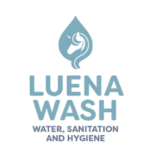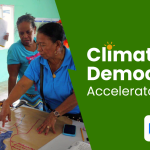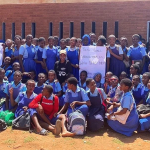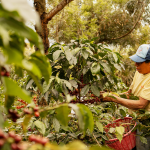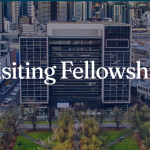By Happy Tarumadevyanto | Independent Consultant| Environmental Asia| happy.devyanto@environmental.asia
Relevant to this article
The government’s homework to increase the social forestry program to 7.38 million hectares (ha) over the next seven years is challenging. The development of the Social Forestry Program is based on the fact that currently, many community groups live in and around forests.
The Indonesian government has prioritised these schemes with a plan to increase social forestry area to 12.7 million hectares by 2021 (MoEF, 2018). This substantial (more than six-fold) increase in forest area under social forestry scheme within three years (2018 – 2021) is expected to provide opportunities to local communities, particularly to the poor, to improve social, economic and environmental outcomes through agroforestry practices. Around 37% (10.2 million people) of poor people live in surrounding forest areas in Indonesia (MoEF, 2017b), and this plan could also be a crucial instrument for poverty alleviation and rural development.

Poverty In Indonesia

Based on the fact More than 50% of Indonesian people are dependent on forest products, both wood and non-wood. This condition is caused by the fact that the people live around forest areas. This community dependency is not necessarily without reason, but rather is to meet their daily needs. Communities around forests tend to have high poverty rates and low levels of education (Suyanto, 2006). A low level of education will limit understanding of forest and land improvement efforts both in terms of utilization and conservation.

Government’s Learning Process
Through the learning process that is carried out by the Government and other stakeholders, the Social Forestry Program has become one of the core setting related to improving the welfare of local communities. Following is the information relevant to Social Forestry Development case-per-case basis.

Source: Ministry of Environment and Forestry, Media Indonesia Research and Development
Forest utilization, agricultural economic business opportunities
Communities around forests are residents who live around forest areas who have a unified social community with a common livelihood that depends on the forest and whose activities can influence the forest ecosystem.
The authority to grant PS (Perhutanan Sosial) permits by the state to communities consists of 5 schemes, as follow:
- Village Forest (HD), HD is a state forest that is managed by the village and used for village welfare, the management of which is handed over to village institutions.
- Community Forest (HKm), HKm is a state forest whose main use is to empower the community, its management is handed over to a group or combination of Community groups. So far the program has involved around 1.2 million heads of families.
- HTR Community Plantation Forest, Permits to use wood in the HTR are given to community groups or individuals who apply plant cultivation techniques according to the site to ensure the sustainability of forest resources.
- Forestry Partnership (KK) and
- Customary Forest (HA).
The Ministry of Environment and Forestry notes that there are around 25,863 villages in and around forest areas. This means that around 9.2 million households depend on the existence of forests. Based on Minister of Environment and Forestry Regulation No. P.83/MENLHK/SEKJEN/KUM.1/10/2016, Social forestry is a sustainable forest management system implemented in state forest areas or private/customary forests implemented by local communities or customary law communities as the main actors in order to improve their welfare , environmental balance and socio-cultural dynamics in the form of Village Forests, Community Forests, Community Plantation Forests, Community Forests, Customary Forests and Forestry Partnerships.
The Target is that social forestry can reach 12.7 million ha by 2030. Meanwhile, as of May 2023, only around 5.5 million ha of state forest area has been allocated for social forestry.
on June 5 2024, the position of Director General of Social Forestry and Environmental Partnerships (PSKL) which was entrusted to Mr Bambang Supriyanto since November 7 2017 has been completed (6 years and 8 months). With the direction of the Honorable Minister of Environment and Forestry, the target of 12.7 million ha has been achieved with 7.08 million ha, 13,236 KUPS and 43 integrated area development role models have been formed. This is the result of the Team’s hard work.
Forests’ Benefit for All, A Case Study
Many community empowerment programs around forests have been carried out, one of which is in DI Yogyakarta Province, as for example Gunung Kidul Regency’s case study. Communities around the forest carry out institutional and forest management activities through intercropping between main crops and intercrops which can increase farmers’ income.
Meanwhile, Head of the Control Section of the Forestry and Plantation Service of Gunung Kidul Regency, Sunyoto, said that the district government has made efforts to restore forest vegetation every year.
Based on Antara Report (2011) and inteview with Local Official Government, Gunung Kidul has carried out more than 1 million tree planting movements as part of the restoration of forest vegetation.
Therefore the total area of community forests in this district was 40,000 hectares spread across 18 sub-districts. Every year the area of community forests increases by 300 hectares per year.
2022 Report on Gunung Kidul ‘s Fact
On an occasion there were 1,000 red guava tree seedlings which the Mount Butuhan area has become a conservation area for biodiversity along with other plants such as soursop, jackfruit, mahogany, teak, sengon/abasia and others.
The choice of this type of tree was also motivated by the presence of long-tailed macaques which often come down to residential areas to look for food.
It is expected that the existence of this guava tree will make it easier for monkeys to find food in the Mount Butuhan area without having to damage the local plants.
Apart from this background, the choice of Mount Batuhan was also based on the fact that this area is one of the highest plains in Gunungkidul which is a source of clean water for several other areas.
It is also hoped that the existence of these guava trees will provide more clean water routes for the Genjahan Village area and its surroundings.
The story of empowering communities around the forest is not only in Gunungkidul but also in Boyolali Regency, specifically in Kemusu District. The program for empowering village communities around the forest in Boyolali is still not being implemented properly as intended in the ministerial regulation.
There has been no visible increase in farmers’ welfare from the use of forest land. This article presents the results of research on empowering village communities around forests in Kemusu District, Boyolali Regency. The target of this research is to offer alternative strategies that can be implemented in implementing the empowerment program for village communities around forests in Kemusu District, Boyolali Regency.
Source: Strategy for Empowering Village Communities Around Forests in Boyolali Regency
Community Empowerment Strategy Village Around the Forest in Boyolali Regency
Irvan Khoeroni, Suwarto, Hanifah Ihsaniyati
Social Forestry: State Forests or Community-based Forests?

Dispute in Social Forestry Operation, Java Case
Recently a video circulated on a YouTube channel of two community groups arguing and almost breaking out into a fight because they were fighting over forest management claims in Rembang, Central Java.
The first group considers that they have used this area through collaboration with Perum Perhutani. Meanwhile, the second group claims that the area has become a forest area with special management (KHDPK) which was handed over to them by the president on March 10 2023 in Blora, Central Java.
The President indeed handed over 19 decrees approving the management of social forestry at KHDPK of around 21,000 hectares for community groups in seven districts in Central Java and East Java. The decision letter not only approves social forestry management, but also some decisions on indicative social forestry areas at KHDPK that have not been validated.
The area that the community is fighting over seems to be an indicative area, which due to lack of proper socialization has led to conflict. In the future, if this is not anticipated, incidents of mutual claims that lead to conflict like in the video could happen again.
Efforts to Overcome Disputes in Social Forestry
Focused Group Discussion 2023
Perhutani Regional Division (Divre) East Java together with the East Java Provincial Forestry Service (Dishut) held a Focused Group Discussion (FGD) in the context of collaborative forest management after Special Management Forest Areas (KHDPK). This activity took place at Graha Wanajava Perhutani Forestry Institute Madiun, on Thursday (31/08). Source: https://kominfo.jatimprov.go.id/berita/perhutani-dan-dishut-jatim-sinergitas-kelola-kawasan-hutan
Ministry of Environment and Forestry’s Policy Outreach Dissemination
PRESS CONFERENCE
Number: SP. 173/HUMAS/PPIP/HMS.3/05/2023
The Ministry of Environment and Forestry continued its series of policy outreach on the implementation of Forest Areas with Special Management (KHDPK) in West Java Province, Wednesday (31/5). In the opening session, Secretary General of the Ministry of Environment and Forestry Bambang Hendroyono delivered directions regarding the philosophy of forest area management policy and the birth of the KHDPK policy.
“The conditions to be achieved through KHDPK are the optimization of forest area management; effectiveness and efficiency of Perhutani management; determination of 100% forest area; reduction of critical land in forest areas; increasing carrying capacity and carrying capacity; “reducing forest area conflicts and increasing access to forest social management,” he said.


